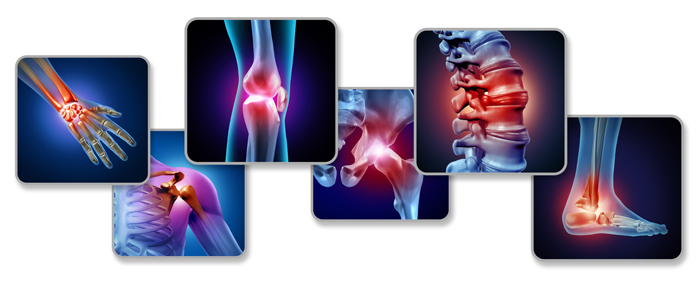Osteoarthritis Treatment in Kondapur, Hyderabad
Arthritis is the most common type of arthritis, affecting millions of people worldwide. Osteoarthritis develops as the protective cartilage that cushions the ends of bones deteriorates over time.
What is Osteoarthritis?
A joint is a point at which two bones come together. Cartilage, a form of connective tissue, protects the ends of bones. The function of cartilage is to minimize friction and act as a shock absorber. In osteoarthritis, this cartilage deteriorates, due to which bones start to rub against each other. This can cause stiffness, pain, and other negative side effects.

What are the Symptoms of Osteoarthritis?
Osteoarthritis symptoms appear gradually and intensify over time. These signs and symptoms include;
- Stiffness – People with osteoarthritis may suffer joint stiffness, especially when they first wake up or after sitting for long durations or being sedentary for some time.
- Bone Spurs – These are tiny bone fragments that can grow around the osteoarthritis-affected joint.
- Tenderness – People with osteoarthritis may experience tenderness when they apply pressure to the affected joint or its surrounding area.
- Swelling – Swelling around the affected joint may occur as a result of inflammation of the tissues around it.
- Loss of flexibility – People suffering from osteoarthritis may notice that they are unable to move their joint through its entire range of motion.
- Pain – In osteoarthritis, affected joint pains during or after movement.
- Scraping – Individuals with osteoarthritis may experience a scraping or grating sensation while moving the affected joint. A crackling or popping sound may also be heard.
What are the Causes of Osteoarthritis?
Osteoarthritis occurs when cartilage degrades over time, resulting in a joint injury. If it completely wears down, bones begin to rub against one other, causing symptoms such as stiffness and pain.
Osteoarthritis is classified as a wear-and-tear condition because cartilage begins to wear away as we age. Osteoarthritis can also be caused by dislocated joints, ligament tears, joint deformity, damaged cartilage, bad posture, or obesity, all of which cause joint deterioration.
When to See a Doctor?
You should consult a doctor if you experience any of the following signs –
- Discomfort, tenderness, or stiffness in the affected joint, especially when you first get up or after a long period of rest.
- Even when undertaking daily chores, you have difficulties moving the affected joint.
- You can’t move your joint across its range of motion.
- After a lengthy period of activity, your joints are swollen.
- When you flex the damaged joint, you will feel a clicking or popping sensation.
Request an appointment at Apollo Spectra Hospitals, Kondapur
Call 1860-500-2244 to book an appointment
What are the Risk Factors of Osteoarthritis?
The risk of osteoarthritis increases with various risk factors, including;
- Joint injury – Joint injuries, such as injuries resulting from an accident or those sustained in contact sports, can lead to osteoarthritis.
- Metabolic diseases – The risk of osteoarthritis increases in individuals who have certain metabolic conditions such as hemochromatosis or diabetes.
- Obesity – Being overweight or obese increases the stress on weight-bearing joints, which can lead to the development of osteoarthritis.
- Joint deformities – Individuals born with defective cartilage or malformed joints are at a higher risk of developing osteoarthritis.
- Gender – Women are more likely than men to develop osteoarthritis.
- Genetics – Some people are genetically predisposed to osteoarthritis.
- Age – The risk of osteoarthritis increases with age.
- Repetitive motion – People who are required to engage in repetitive motion, such as while playing sports, are more likely to develop osteoarthritis.
How is Osteoarthritis Diagnosed?
Your doctor at Apollo Kondapur will evaluate your complete medical history and ask you about your symptoms. They’ll also conduct a physical exam to look for soreness, flexibility, redness, and swelling in the affected joint. Following that, your doctor may conduct imaging tests like X-rays, ultrasounds, and MRIs, as well as lab testing including blood tests and joint fluid analyses.
How Can We Treat Osteoarthritis?
Typically, non-surgical options are the initial line of treatment for osteoarthritis. These options include –
- Medication – NSAIDs, duloxetine, and acetaminophen are examples of medications used for osteoarthritis treatment.
- Physical therapy – Physical therapy, which involves exercises to strengthen muscles around the afflicted joint and develop flexibility, is used to relieve pain and improve flexibility.
- Other methods – Other non-surgical treatment options for osteoarthritis include lubrication or cortisone injections.
If these treatment options fail to work, surgery such as bone realignment or joint replacement may be performed.
How Can We Prevent Osteoarthritis?
It isn’t possible to prevent osteoarthritis. However, the following tips can help lower its risk;
- Getting enough rest
- Wearing the right shoes and athletic supports to support your body
- Watching your weight
- Following a well-balanced, healthy diet
Osteoarthritis is not curable, but with proper treatment and management, most people go on to live a normal life. If you have osteoarthritis symptoms, see your doctor right away so you can start treatment and go back to your normal routine.
Several home remedies can help you ease osteoarthritis symptoms, such as;
- Losing extra weight
- Wearing splints
- Using assistive devices such as walkers and canes
There isn’t one specific exercise that is best for everyone with osteoarthritis. However, they can try different exercises such as;
- Yoga
- Tai chi
- Swimming
- Cycling
- Strength exercises using bodyweight, free weights, or weight machines
Certain foods can help ease symptoms of osteoarthritis and reduce inflammation, such as;
- Green, leafy vegetables
- Green tea
- Bell peppers
- Garlic
- Broccoli
- Citrus fruits
- Pineapples
- Pomegranates
Symptoms
Treatments
Our Top Specialities
NOTICE BOARD
CONTACT US
CONTACT US
 Book Appointment
Book Appointment


.svg)
.svg)
.svg)
.svg)








